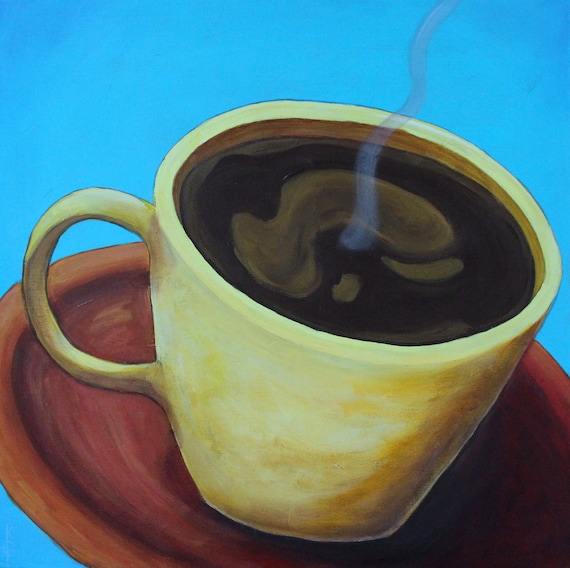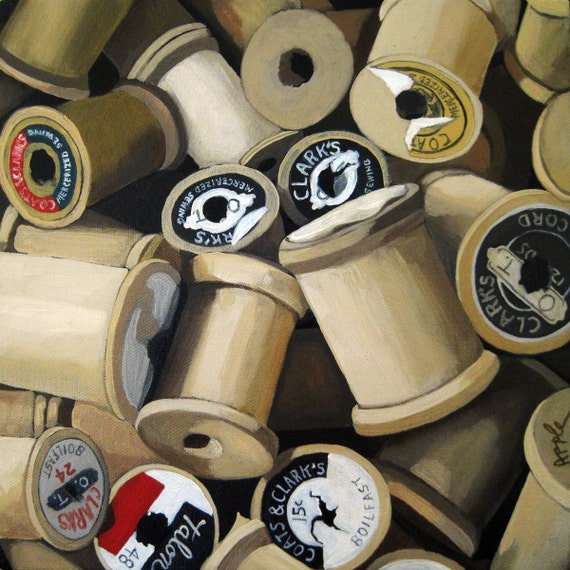Whether you are the artist or a collector of paintings, it is useful to have an understanding of the difference between oil paint and acrylic paint. Each of these paint types have different characteristics that will effect everything from how the colors look on the painted surface, to how quickly the paints dry. The type of paint chosen will determine how easy it is to blend, how much preparation is needed before beginning a painting, how the colors will appear over time, and whether or not you need ventilation while working. Here are some of the differences between acrylic paints and oil paints and what can be expected when using each one.
Acrylic Paints from an Artist’s Point of View
 Acrylic paints are a wonderful choice if you want to paint on a variety of surfaces and not strictly canvas. They are simple to set up in preparation for painting and dry very quickly, providing less time to work before the paint begins to dry. The drying time can be extended slightly by adding another medium to the acrylic paint, such as a retarder, or by using a stay wet palette that will help to keep the paint moist.
Acrylic paints are a wonderful choice if you want to paint on a variety of surfaces and not strictly canvas. They are simple to set up in preparation for painting and dry very quickly, providing less time to work before the paint begins to dry. The drying time can be extended slightly by adding another medium to the acrylic paint, such as a retarder, or by using a stay wet palette that will help to keep the paint moist.
Acrylics are the right choice for creating a crisp edge in a painting, and they will produce bright colors. Due to the fast drying action of acrylic paints, it can sometimes be difficult to create a smooth blend in your work. If you find it difficult to work fast enough to blend the paint correctly, consider adding a retarder, soft gel gloss, or glazing liquid gloss to the paint to keep it moist and blendable for a longer period of time.
A great advantage of using acrylic paints is that the colors are lightfast and will not fade or yellow with age. However, it is important to note that while the colors will remain looking the same after applied to the canvas, it can be tricky painting with acrylics because the colors tend to darken as they dry. This means that the color that you first apply to the canvas may be exactly the shade you desire it to be, but it may appear darker after drying on the canvas. With practice and time you can learn to adjust colors slightly to achieve the desired end result. Note that adding acrylic polymers to the paint will intensify the color change and make it more obvious in the end result.
Using acrylic paint provides a certain flexibility to the process of painting. It allows the artist to create thickness such as when doing an impasto painting, and also allows working with thin glazes. Using acrylics applied in thin coats can give the painting the look of a watercolor. Another plus to using acrylics is that the paint does not tend to crack over time.
If you have a small work area without especially good ventilation, acrylics are a good choice because they have no odor and are non-toxic.
Coffee to Go Chickadee Painting
Chickadee Painting
Oil Paints from an Artist’s Point of View
Oil paint allows the artist to have greater flexibility when painting due to its slow drying time. An artist can stop and start a painting and make any tweaks and adjustments over a period of days because the paint remains moist and pliable. This allows plenty of time for blending paint as you progress with the painting. Artists can achieve subtle blends and smooth transitions when using oils. However, because of the corrosive nature of oil paints, you must either purchase a pre-primed canvas, or take the time to prepare the surface of the canvas before you can even begin painting.
One disadvantage to the slow drying time of oil paint is that in order to create a crisp edge in a painting, to avoid disturbing the underlying colors you must wait a day or longer to do this. Attempting to create an edge sooner than this can pull up and mix paint colors, creating a “muddy” appearance.
Occasionally when working with oil paints, the oil may absorb into the canvas, leaving you with some glossy areas, and some areas with more of a matte finish. This requires the painter to “oil out” the area of the canvas you are working with. Oil paint also naturally yellows with age due to the oxidation process. Certain binders used in the paint may cause more yellowing to occur than others.
When working with oils, keep in mind that you will need to set aside your work to allow for drying in between layers and colors. Certain pigment colors will require longer drying time than others. In order to accelerate the drying time of oil paints by about 50%, a cobalt drier or a synthetic medium known as Liquin can be added to the paint.
Oil paints cannot be used in small spaces, or in spaces with poor ventilation due to the strong odor. Oils require the use of thinners such as turpentine or white spirits, which pose some dangers along with producing toxic fumes.
Vintage Wooden Spools A Spot at Hebble Creek
A Spot at Hebble Creek
Acrylics vs. Oils from a Buyer or Collector’s Point of View
Many people in the art world still feel that oil paintings are superior or more valuable than acrylic paintings. This is likely because many great painters of the past have used oils and that oil paints have been around for centuries. When acrylic paints were first introduced, they were inferior to the acrylics that are available today. Today’s acrylics are available in both gloss and matte varieties that can even produce the sheen associated with oil paints. Quality acrylic paints made today also carry the same pigment load as oil paints, and some manufacturers even produce both types of paints. Acrylic paints offer a non-toxic alternative that is better for the environment as well as human health. Oil paints also tend to decay at a faster rate due to the use of organic materials, whereas acrylics are made from synthetic polymers that will last longer.
What it all comes down to is that no one paint is actually superior over the other, it is really just a matter of opinion and what the artist chooses to use and what appeals to the buyer. When purchasing a piece of art, the decision should be made based upon the actual finished product as opposed to what type of paint was used.
What are Oil Paints and Acrylic Paints Made From?
Oil paints are made from a combination of pigment, binder, and solvent. The color, or pigment, is typically a powder and the binder is linseed oil. The solvent used in oil paint is commonly turpentine or mineral spirits. Pigments can be inorganic, organic, or artificial.
Acrylic paints are made from pigment suspended in a binder of acrylic polymer emulsion and uses water instead of oil.
Both oil and acrylic paints are capable of producing beautiful paintings. As an artist, it typically comes down to how you like to work and what paint suits your working style the best. As a collector, it is generally a matter of personal preference.




